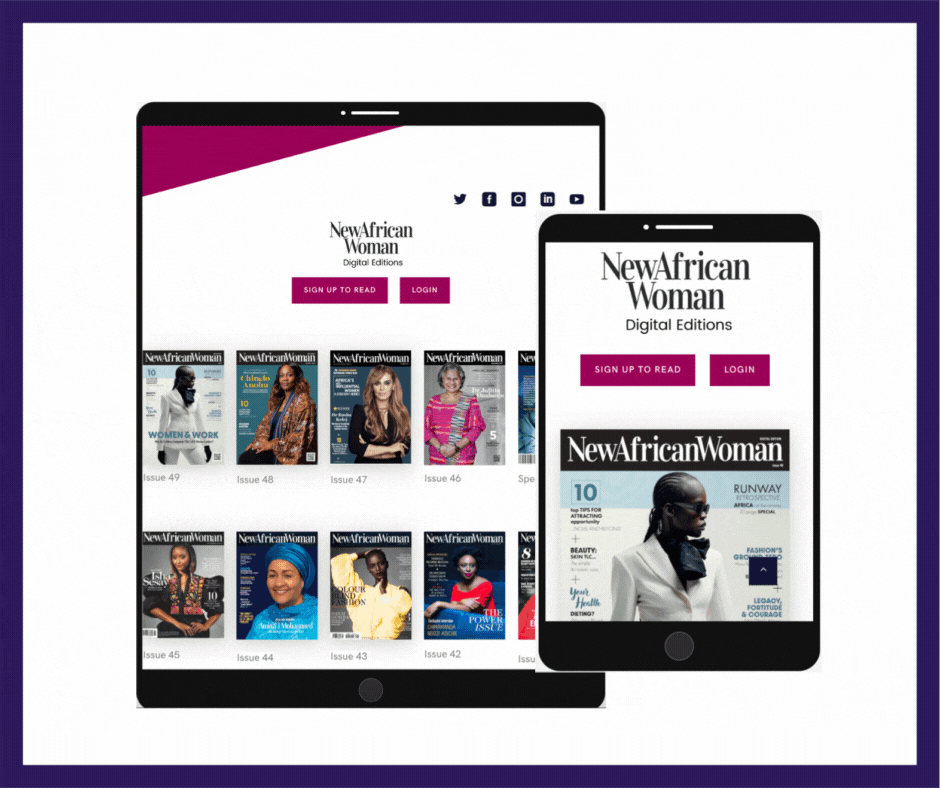VIEWPOINT: The Power Of Digital Innovation In Opening Up New Markets For African Fashion Creatives

(Feature Image: SDR Photos for South Africa Fashion Week/Designer:Mantsho)
The African fashion industry pulsates with vibrancy and diversity, boasting a rich cultural heritage and an abundance of creative talent. From traditional textiles to contemporary designs, African fashion has earned widespread global recognition for its unique aesthetic and remarkable craftsmanship. Writes Samuel Mensah.
Indeed, Africa has become a compelling new frontier for fashion, offering the industry a fresh perspective on style and boasting a burgeoning creative class that is propelling Africa’s wealth of talent and resources onto the world stage.
Nonetheless, despite this tremendous potential, a recent study highlights some challenges faced by creative businesses on the continent. Many of these enterprises are young, small, and generate relatively modest monthly orders, resulting in lower earnings. Surprisingly, nearly 70% of these businesses are less than five years old, and about a third are less than three years old. Moreover, 68% of creative businesses employ fewer than five people, and a staggering 80% fulfill less than 30 orders per month, translating to less than one order per day. The median earnings for these businesses typically range from $250 to $500 per month.
The Ananse White Paper, titled “Unleashing the Commercial Potential of African Creatives Through Digital Technology” emanates from a comprehensive study conducted in collaboration with Botho Emerging Markets Group, Mastercard Foundation, and the African Development Bank’s Fashionomics Initiative.
Employing a mixed research approach, the study encompassed both primary and secondary research, with the primary research consisting of a comprehensive 43-question survey administered to respondents from 46 countries. Notably, Nigeria, Kenya, and South Africa emerged as the top three countries with thriving creative ecosystems.
Increasing Use of Digital Technology
The study underscores a remarkable shift towards the use of digital technology, with a significant lean towards e-commerce. However, the majority of sales still occur through offline channels due to five major barriers to adoption identified in the study: high setup costs, challenges with online payments, logistical and delivery complexities, lack of knowledge of e-commerce setup, and difficulties with ongoing maintenance.
Among the challenges faced by creatives who do not sell online, the most prominent is the high cost associated with setting up an online store. This generally reflects the fact that the services available are not tailored to price points that would be affordable in African countries, given that many such services are provided by companies based in the mature western economies. Moreover, accessibility to online payment services has been historically limited on the continent, though there have been recent improvements. Consequently, even among those African creatives who employ e-commerce, a significant 70% of them make less than half of their sales online. The resolution of these barriers holds immense potential for substantial growth in e-commerce utilization by African creatives.
The study also highlights remarkable growth in the use of social media by African fashion creatives, with social media platforms now playing an essential role in driving new customer traffic, equivalent to the power of word-of-mouth referrals. Social media and word-of-mouth referrals account for 47% and 48% of new customer inquiries, respectively.
A Note on Gender Disparity
Notably, African creatives predominantly consist of women (67%, according to our study). However, these women face gender-based disparities, earning less and hiring fewer individuals than their male counterparts. Of the women creative entrepreneurs, only 32% generate over USD $500 in monthly sales, compared to 42% of men. Furthermore, a mere 27% of women hire five or more staff, in contrast to 42% of men.
Moreover, women display lower proficiency in using digital technologies, engaging in e-commerce, and harnessing digital payment methods. In fact, women are 31% less likely than men to have an e-commerce website. Additionally, female respondents were twice as likely to report having no e-commerce skills, while being twice as less likely as their male counterparts to report having ‘advanced’ e-commerce skills. This emphasizes the importance of targeted policies and strategies that support women-led small and medium-sized businesses, addressing the specific challenges faced by female-owned creative enterprises.
Inter-Africa Trade in Fashion
Like other industries on the continent, African creatives primarily engage in more trade with the rest of the world than with other African countries. Only 4% of African creatives trade with customers in other African countries, whereas 15% conduct trade with international customers outside Africa. The establishment of the African Continental Free Trade Area (AfCTA) offers immense potential for African creatives to expand sales within the continent by eliminating trade barriers and facilitating increased trade flows. When it becomes fully operational, the AfCTA will be the largest free trade area, after the World Trade Organization, by the number of member states, geographic size and population spanning 1.3 billion people.
Challenges Faced by African Designers
The creative economy in Africa contends with various challenges, including limited market access, lack of funding, unfavorable regulatory environments, and skills gaps. Creative entrepreneurs confront numerous hurdles when attempting to access local and international markets, secure financing, navigate regulatory complexities and fully embrace e-commerce. Participants in the study, indicated that they would readily embrace e-commerce with appropriate training. Crucially, the most sought-after skills include managing online stores (74%), using an online store (69%), processing and handling e-commerce orders (63%), building brand profiles (56%), writing product descriptions (54%), and capturing high-quality product photos for e-commerce (44%). These skills challenge for entrepreneurs, can be mitigated by making digital merchandising training more accessible.
Addressing regulatory challenges is equally vital, as e-commerce policies across the African continent exhibit significant variations that impede cross-border trade. Outdated customs policies, particularly regarding cross-border e-commerce, pose significant obstacles. Additionally, ambiguous legal frameworks and intellectual property rights discourage funding institutions from supporting creative enterprises, as they harbor doubts about the viability of investments in delivering acceptable returns. Rectifying these regulatory hurdles would provide a much-needed boost to African creatives, especially considering the surge in e-commerce adoption, which has risen by over 70% in Africa since the pandemic.
Interventions to Address Challenges Faced by African Designers
Given Africa’s accelerated adoption of digital technologies, creative MSMEs are likely to continue shifting towards social media and e-commerce platforms to reach domestic, regional, and international markets. While digital tools can help creative entrepreneurs navigate structural gaps more effectively, a systemic approach is essential to create an enabling environment for business expansion. The Ananse White Paper recommends prioritizing the following five areas for public, private, and development sector actors to empower creative SMMEs to fully leverage digital technology for business scalability:
- Skills development and trade support through vocational training programs, particularly targeting business, digital, and marketing skills for women and young people, who constitute a majority of creative entrepreneurs.
- Harmonization of the African e-commerce customs regime to reduce the complexities of cross-border trade, unlocking significant trade opportunities for African fashion entrepreneurs within the continent and across the world.
- Ensuring that creative MSMEs can fully benefit from the AfCTA, with specific accommodations for the creative sector under the AfCFTA. This includes key policy areas such as intellectual property rights and transparent, harmonized quality standards.
- Regular assessments of the impact of interventions on the lives of African creatives. African countries need to establish a framework for continuous understanding and analysis of the creative economy, thereby informing policymaking.
- Increased investment in the creative industries, achieved by establishing an early-stage fund dedicated to small and medium-sized creative businesses. The African creative industry requires substantial and dedicated capital for creative entrepreneurship, as existing funding mechanisms tend to be small, fragmented, and biased towards larger businesses over MSMEs.
Samuel Mensah is the CEO of Ananse
Download your free copy of the White Paper here.









